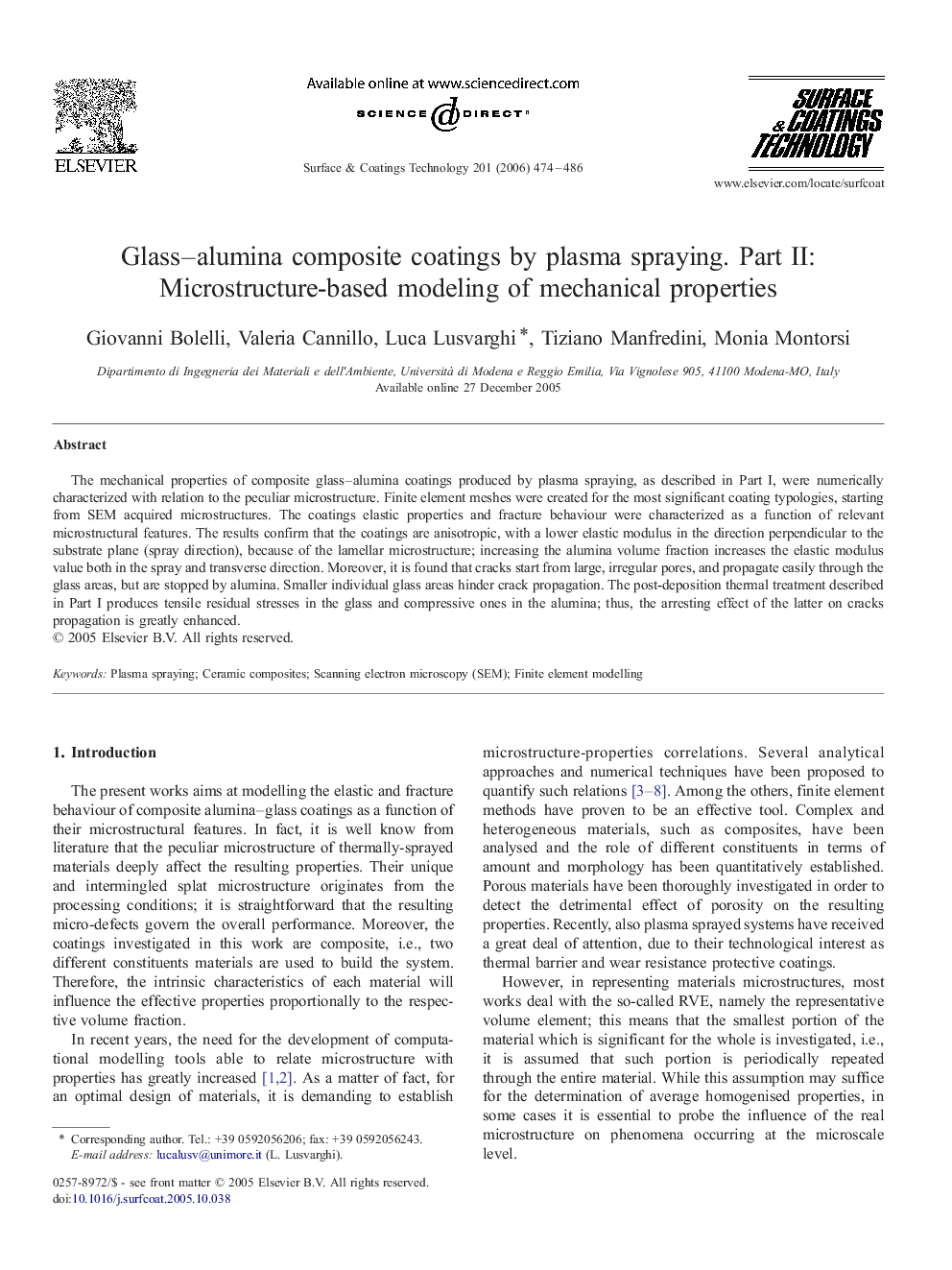| Article ID | Journal | Published Year | Pages | File Type |
|---|---|---|---|---|
| 1663114 | Surface and Coatings Technology | 2006 | 13 Pages |
Abstract
The mechanical properties of composite glass-alumina coatings produced by plasma spraying, as described in Part I, were numerically characterized with relation to the peculiar microstructure. Finite element meshes were created for the most significant coating typologies, starting from SEM acquired microstructures. The coatings elastic properties and fracture behaviour were characterized as a function of relevant microstructural features. The results confirm that the coatings are anisotropic, with a lower elastic modulus in the direction perpendicular to the substrate plane (spray direction), because of the lamellar microstructure; increasing the alumina volume fraction increases the elastic modulus value both in the spray and transverse direction. Moreover, it is found that cracks start from large, irregular pores, and propagate easily through the glass areas, but are stopped by alumina. Smaller individual glass areas hinder crack propagation. The post-deposition thermal treatment described in Part I produces tensile residual stresses in the glass and compressive ones in the alumina; thus, the arresting effect of the latter on cracks propagation is greatly enhanced.
Keywords
Related Topics
Physical Sciences and Engineering
Materials Science
Nanotechnology
Authors
Giovanni Bolelli, Valeria Cannillo, Luca Lusvarghi, Tiziano Manfredini, Monia Montorsi,
